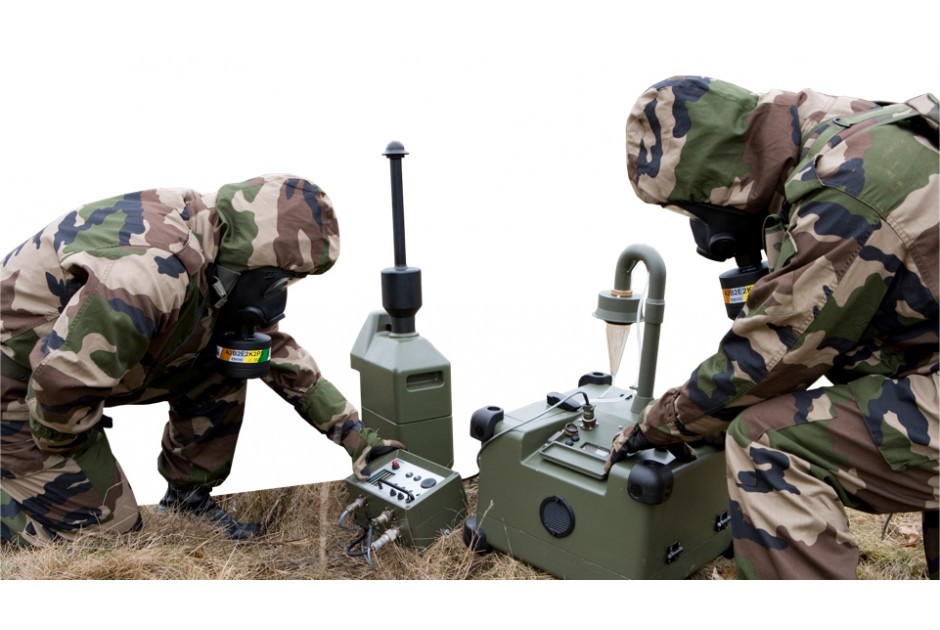ISO 4869 1 Hearing protectors subjective method attenuation determination testing
The ISO 4869-1 standard provides a method to determine the attenuation of hearing protectors using a subjective assessment technique. This test is particularly relevant for military applications where personnel are exposed to high-intensity noise environments, such as those encountered in combat zones or during training exercises.
Understanding the effectiveness of hearing protection is crucial to ensure that soldiers can maintain situational awareness and communication capabilities while minimizing the risk of permanent hearing loss due to excessive noise exposure. The subjective method involves measuring the perceived reduction in sound levels experienced by individuals wearing various types of hearing protectors under controlled conditions.
The test setup typically includes a sound source generating broadband noise within the frequency range specified by ISO 4869-1, along with an artificial ear simulator equipped to measure both free-field and close-talker responses. During testing, subjects wear different styles of hearing protectors (e.g., earmuffs, earplugs) and provide subjective ratings on how much quieter the environment feels compared to their usual noise exposure without any protection.
The results from this test help manufacturers optimize their designs for better performance in real-world scenarios. Additionally, it allows regulatory authorities like NATO or individual country agencies to verify compliance with relevant standards before approving new products for use by military personnel.
For quality managers and compliance officers responsible for ensuring proper equipment procurement and deployment within the military sector, understanding these testing procedures is essential. By adhering strictly to international standards such as ISO 4869-1, organizations can demonstrate their commitment to safety and effectiveness when selecting hearing protectors.
- Ensures consistent measurement across different brands and models of hearing protectors
- Provides data that can be used for continuous improvement in product design
- Aids in meeting regulatory requirements set forth by governing bodies
- Facilitates easier integration into existing training programs aimed at teaching soldiers about safe listening practices
In conclusion, performing ISO 4869-1 testing on hearing protectors ensures that the devices provide adequate noise reduction while remaining comfortable enough for extended use. This approach supports both individual safety and overall mission success.
Frequently Asked Questions
What is the purpose of ISO 4869-1 testing?
ISO 4869-1 testing aims to assess the subjective attenuation provided by hearing protectors. It helps determine how much quieter an individual perceives their environment when wearing different types of protection compared to no protection at all.
Who benefits most from this type of testing?
Military personnel who work in noisy environments stand to gain the most from accurate attenuation measurements. Ensuring that hearing protectors effectively reduce noise levels without compromising communication or situational awareness is critical for their safety and operational effectiveness.
Can you explain what subjective assessment means in this context?
Subjective assessment refers to the process where individuals wearing hearing protectors rate or describe how much quieter they perceive their surroundings to be compared to when not using any protection. This evaluation provides valuable insights into the perceived effectiveness of various hearing protector designs.
How does this testing contribute to military readiness?
By guaranteeing that hearing protectors meet international standards like ISO 4869-1, military organizations can ensure their personnel are equipped with reliable and effective protection against harmful noise levels. This ultimately contributes to improved mission performance and reduced risk of occupational deafness.
What kind of equipment is used during ISO 4869-1 testing?
The test setup includes a sound source capable of generating broadband noise within the specified frequency range, along with an artificial ear simulator designed to measure both free-field and close-talker responses. These tools allow for precise determination of the perceived reduction in sound levels experienced by subjects wearing different types of hearing protectors.
Is this test suitable for all kinds of hearing protectors?
Yes, ISO 4869-1 testing can be applied to various forms of hearing protection, including earmuffs, earplugs, and combinations thereof. The focus is on determining the perceived attenuation provided by each type under controlled conditions.
How often should this test be conducted?
The frequency of ISO 4869-1 testing depends on factors such as product lifecycle, regulatory requirements, and internal quality assurance policies. Regular testing ensures ongoing compliance with established standards and helps identify any potential issues early.
What kind of data can I expect from this test?
From ISO 4869-1 testing, you can anticipate obtaining detailed subjective attenuation values for various hearing protector configurations. This information helps in optimizing product design and meeting both internal quality standards as well as external regulatory expectations.





